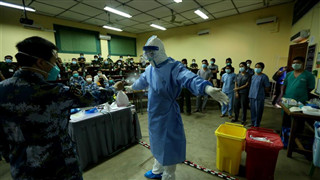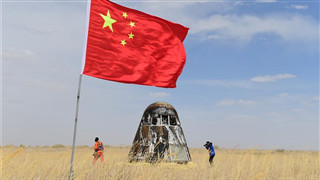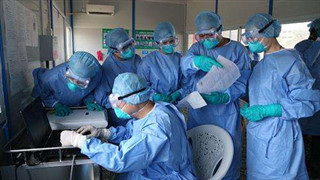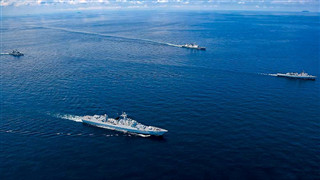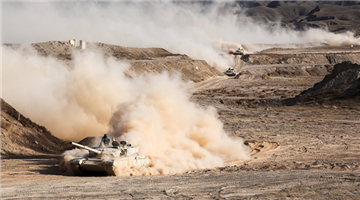
A B-1B Lancer strategic bomber of the US Air Force (USAF) took off from Ellsworth Air Force Base in South Dakota on April 22 and flew nearly 30 hours to arrive at the Misawa Air Base in Japan, where it teamed up with six USAF F-16 Fighting Falcons, seven Japan Air Self Defense Force (JASDF) F-2 fighters and eight JASDF F-15 fighters for a joint drill, according to the US media.
This was the second bilateral exercise between USAF and JSDF this year with strategic bombers as the core, and also a combined operation of the bomber groups under US Indo-Pacific Command and US Strategic Command, demonstrating the new combat concept of "Dynamic Force Employment (DFE)" currently advocated by the US military.
The new concept requires the USAF to deliver troops and make substantial military deployments globally at short notice without any prior warning to the adversary, so as to realize the combination of strategic predictability and operational unpredictability and deter the potential rivals.
Under this new combat concept, the USAF has begun to transform its force deployment model, particularly enabling strategic bombers to make a global long-range delivery, to operate in the United States and broader areas overseas with greater operational resilience.
As one of the three nuclear deterrents at US airbases, the B-1B Lancer is the most powerful strategic bomber in the world and therefore an important instrument to exercise the "dynamic force employment".
The US military has taken a series of military moves while the widespread COVID-19 pandemic is posing a serious threat to its combat capabilities. It is also an important move to demonstrate its global strike capability and hegemonic position despite the impacts of the pandemic by assigning strategic bombers from the US continent for a prolonged flight to the Asia Pacific for strategic deterrence.
The COVID-19 outbreak has stranded several US aircraft carriers from combat missions, leaving no carriers on the Pacific Ocean for the first time after WWII. Meanwhile, the USAF, concerned about the pandemic situation in Guam, announced on April 17 to halt the continuous rotation of strategic bombers to the Andersen Air Force Base on the island, and has called back all five B-52H bombers stationed there with no aircraft arriving to replace them. This put an end to the USAF's Continuous Bomber Presence Mission to Guam since 2004 and left the US military with neither aircraft carrier nor strategic bomber in the Indo-Pacific region, which has not only seriously unsettled the top brass at Pentagon, but also made the American allies worried about Washington's ability to continue performing relevant defense duties.
Under such circumstances, the US, on the excuse of "safeguarding regional security and stability", assigned a B-1B bomber under USAF 28th Bomb Wing from the Ellsworth Air Force Base in South Dakota to fly across the Pacific Ocean for a joint drill in Japan. This was not only to enhance its presence to ease the allies' anxiety, but also to flex muscles and showcase its ability to respond to operational unpredictability in the pandemic.
As Gen. Charles Q. Brown Jr., commander of US Pacific Air Forces, said, although the US has suspended all overseas military operations, it is still in possession of strong global long-range strike capability and able to deploy strategic strike forces worldwide in response to invisible global threats and any form of military aggression. The USAF remains a lethal, innovative, and interoperable combat force.
For future development, the US, to adapt to and implement the new combat mode, will continue to adjust its troops' deployments from fixed-location to random-location deployment, and step up global long-range troops delivery capability. It will also strengthen the combined operation with its allies and partners to improve the ability of group combat, so as to realize the strategic shifting from "continuous stationing" to "dynamic force employment".
(The author is Fang Xiaozhi, a researcher at the Institute of Strategic Studies and International Security, Fudan Institute of Belt and Road & Global Governance)

